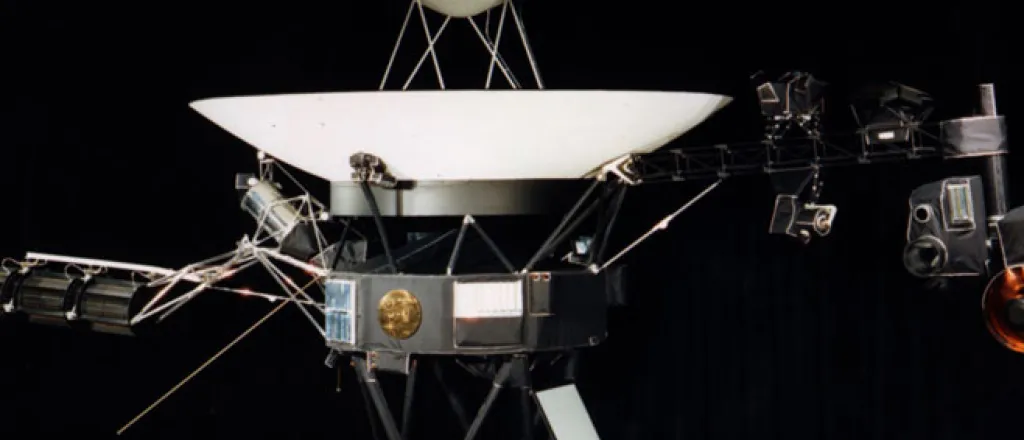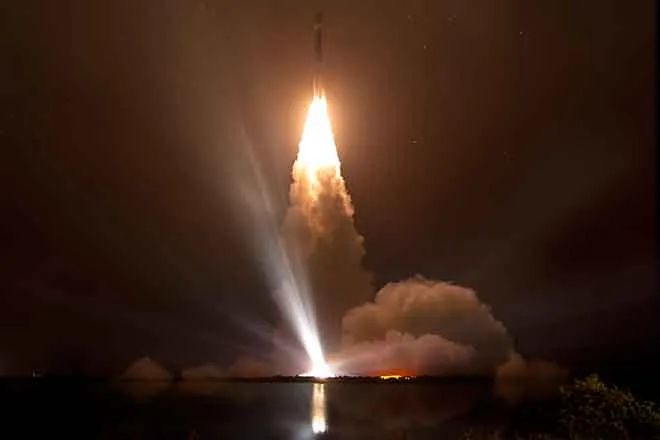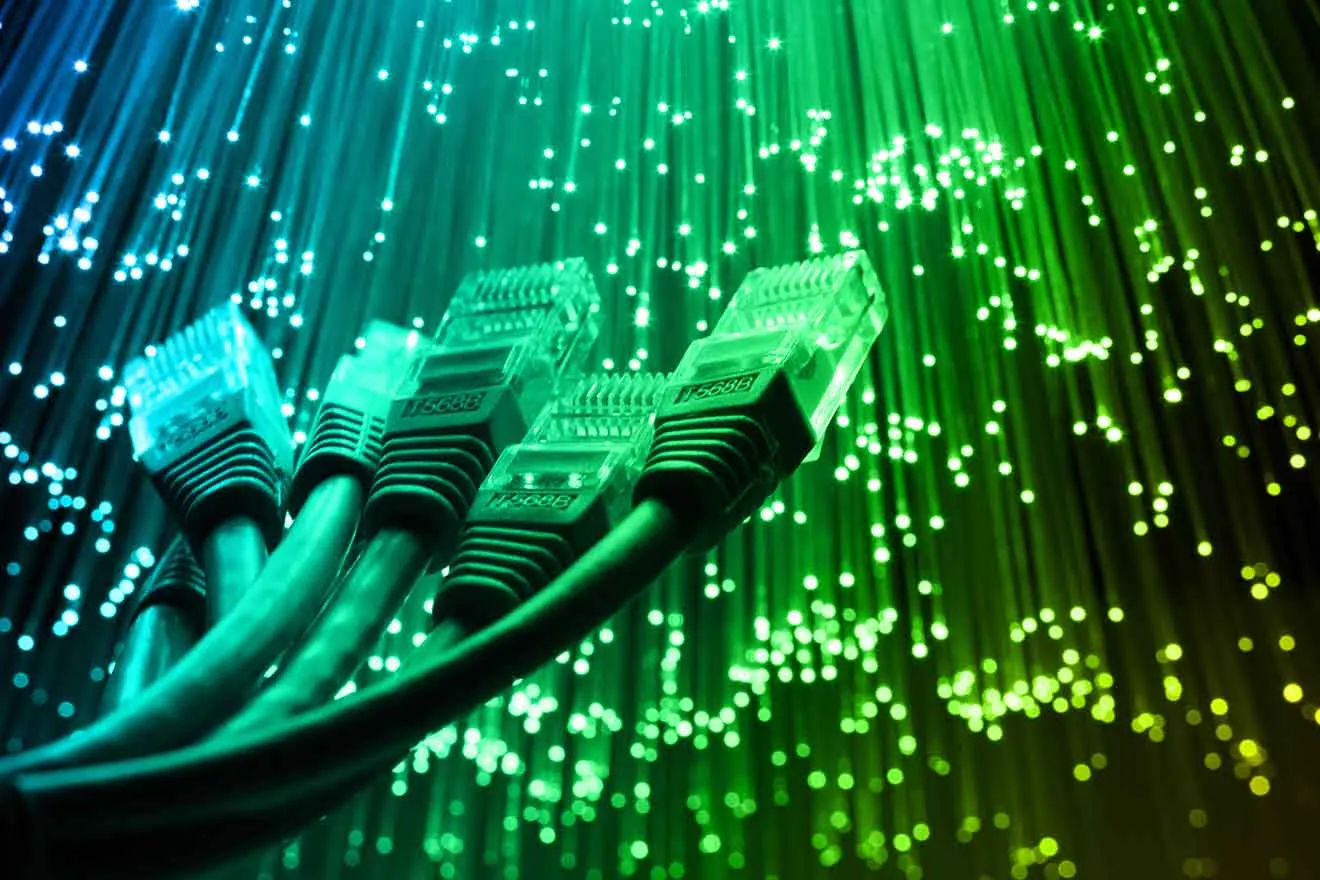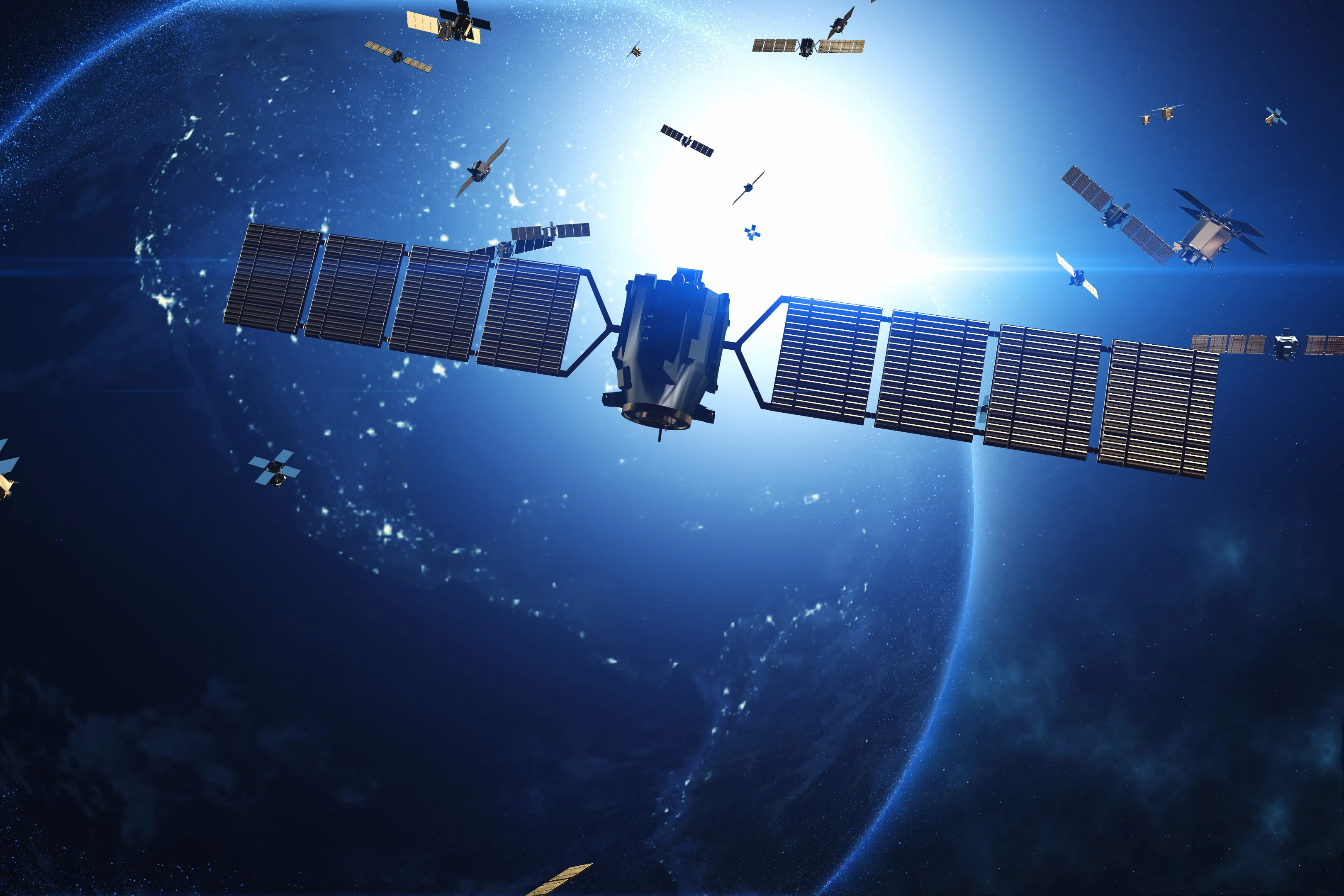
40 Years in Space – NASA’s Voyager 1 and 2
Tuesday marks the 40th anniversary of the launch of NASA’s Voyager 1 space probe. A companion spacecraft, Voyager 2, had launched a few weeks earlier on August 20, 1977.
At around 13 billion miles away, Voyager 1 has traveled the furthest distance from Earth for a human-created object. Voyager 2 has a record of its own – the longest continuously operating spacecraft.
Both space vehicles carry a gold-clad copper disk carrying messages from Earth in the form of a phonograph record – the primary technology for recording audio before the age of (from newest to oldest) streaming music, iPods, DVDs, CDs, cassette tapes and 8-track tapes. Records we pressed into inexpensive vinyl disks.
Encoded on the record is a mix of 115 images, music, sound from the Earth, and greetings in 55 languages, along with written greetings from then-U.S. President Jimmy Carter and United Nations Secretary General Kurt Waldheim.
The opposite side of the record contains simple diagrams intended to explain how to use the record, and provide an understanding of the location of the Earth. Additionally, the Voyager spacecraft both have a small sample of Uranium-238, which has a half-life of 4.51 billion years. By studying the amount of decay, the age of the craft – and thus the amount of time they have spent in space - can be calculated.
Both craft continue to gather data, which is transmitted back to Earth for study. Voyager 1 reached interstellar space – the vast area between stars - earlier this decade. The two vehicles travel more than three times the distance from the Earth to the sun each year.
The craft were originally built to gather data about Jupiter and Saturn. After collecting information about the two gas-giant planets, their mission was extended. Voyager 2 explored Uranus and Neptune before both spacecraft continue on paths taking them billions of miles beyond Earth and the far reaches of the solar system.
They are expected to remain operational until around 2020 when they will cease generating enough electrical power to operate scientific instruments.
Engineering and Computing Firsts and Records
The Voyagers, which launched with nearly identical configurations and instruments, were designed to withstand the harsh radiation environment of Jupiter -- the greatest physical challenge they would ever encounter. Preparations for the peril at Jupiter ensured that the Voyagers would be well equipped for the rest of their journeys, too.
Engineering and computing advances that the Voyagers debuted set the stage for future missions.
- First spacecraft extensively protected against radiation, which also set the standard for radiation design margin still in use for space missions today
- First spacecraft protected against external electrostatic discharges
- First spacecraft with programmable computer-controlled attitude and articulation (which means the pointing of the spacecraft)
- First spacecraft with autonomous fault protection, able to detect its own problems and take corrective action
- First use of Reed-Solomon code for spacecraft data -- an algorithm to reduce errors in data transmission and storage, which is widely used today
- First time engineers linked ground communications antennas together in an array to be able to receive more data (for Voyager 2’s Uranus encounter)
The Voyager spacecraft were built by NASA's Jet Propulsion Laboratory, Pasadena, California, which continues to operate both. JPL is a division of Caltech in Pasadena. The Voyager missions are a part of the NASA Heliophysics System Observatory, sponsored by the Heliophysics Division of the Science Mission Directorate in Washington.
Free, downloadable poster celebrating the Voyager achievements can be found at https://goo.gl/6VBvdz
Compiled with information provided in part by NASA./JPL. Photos courtesy NASA/JPL
















